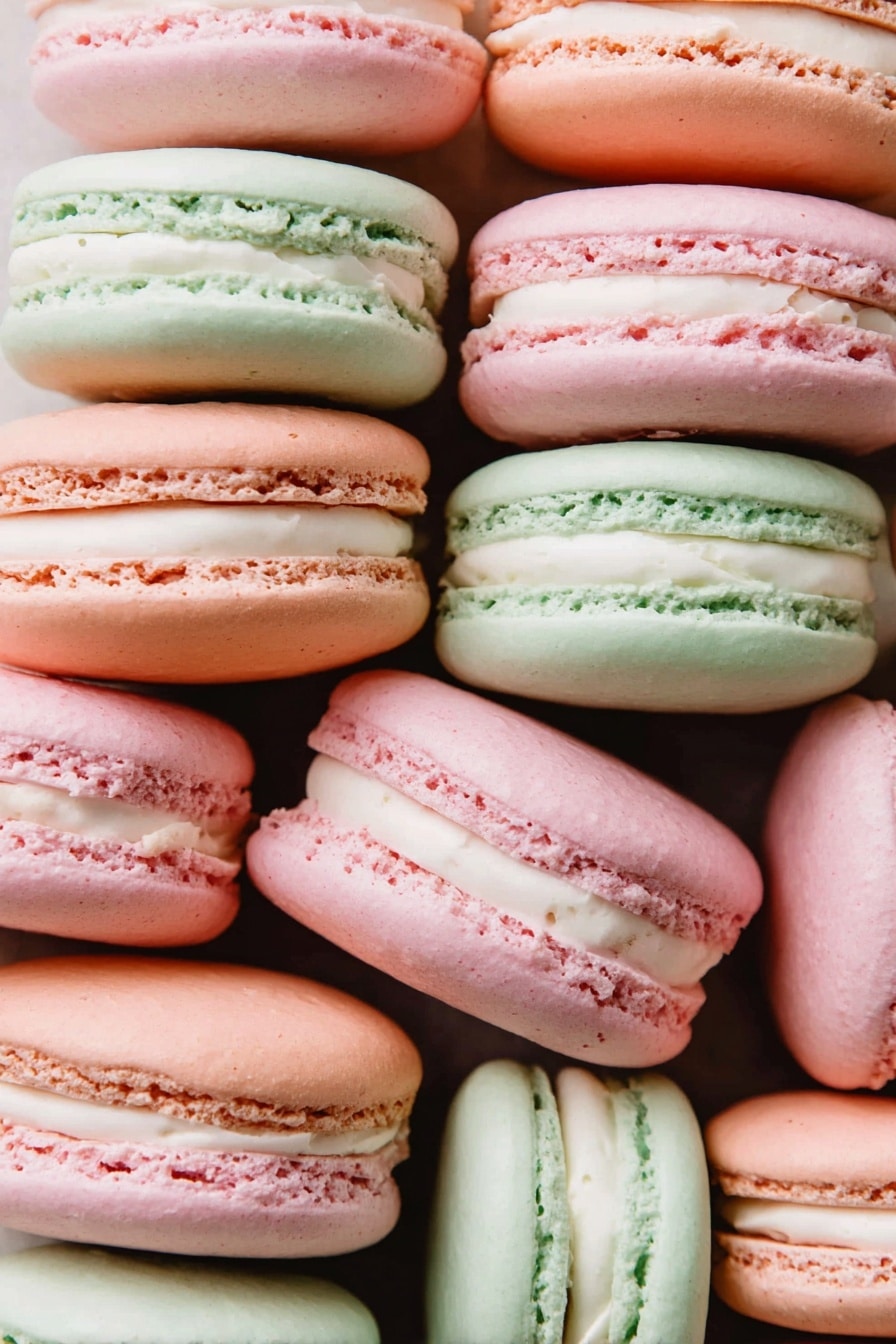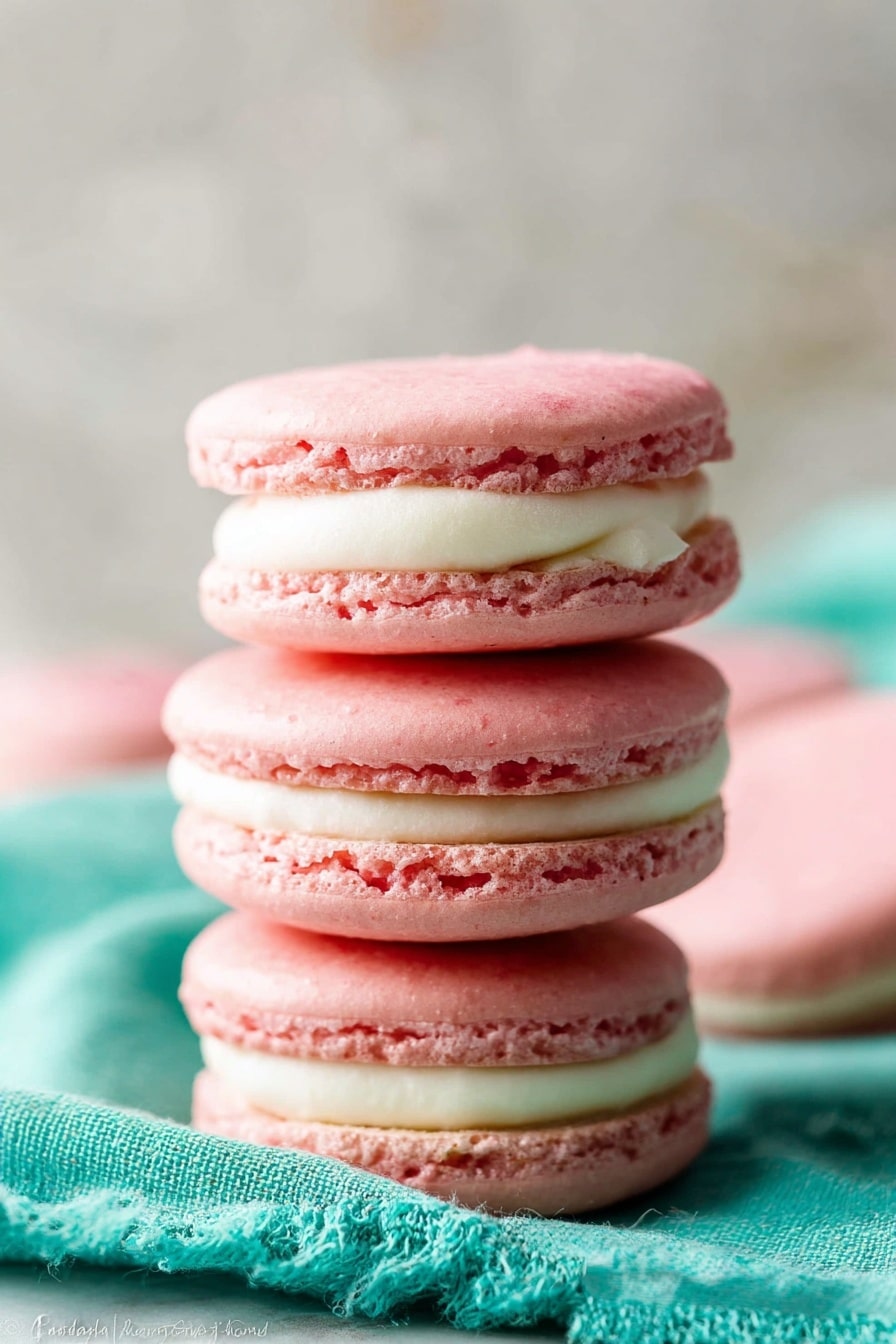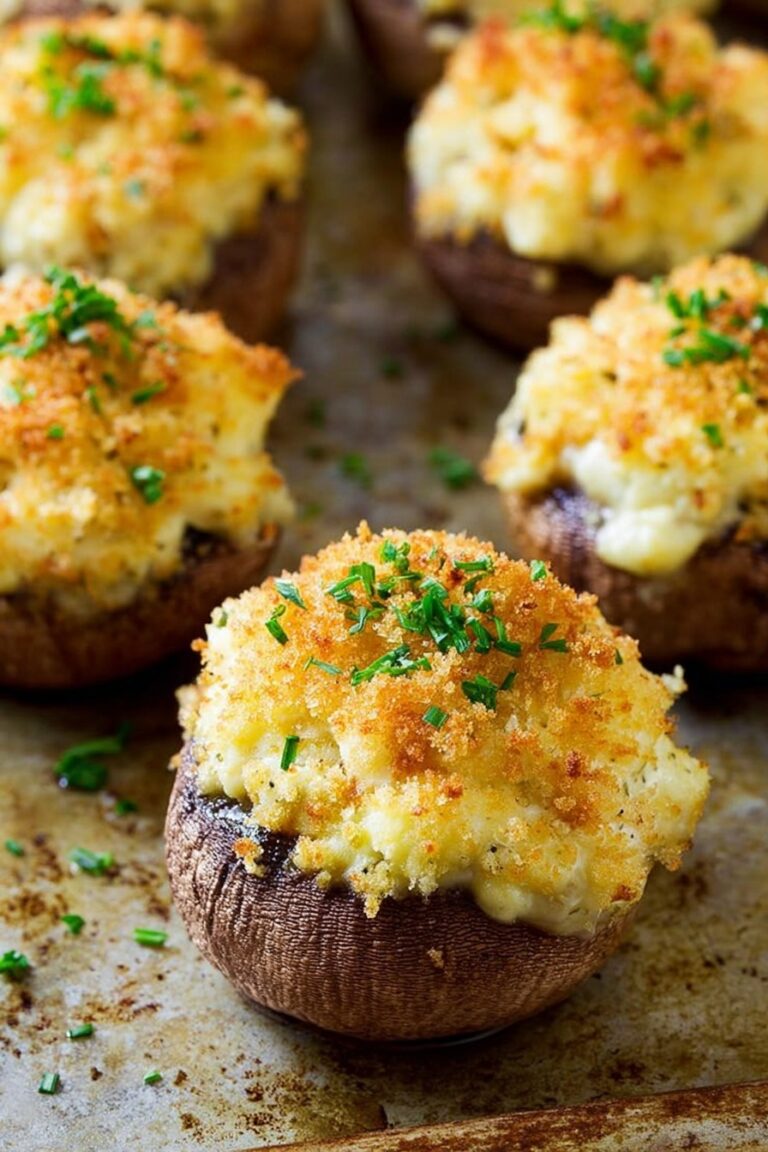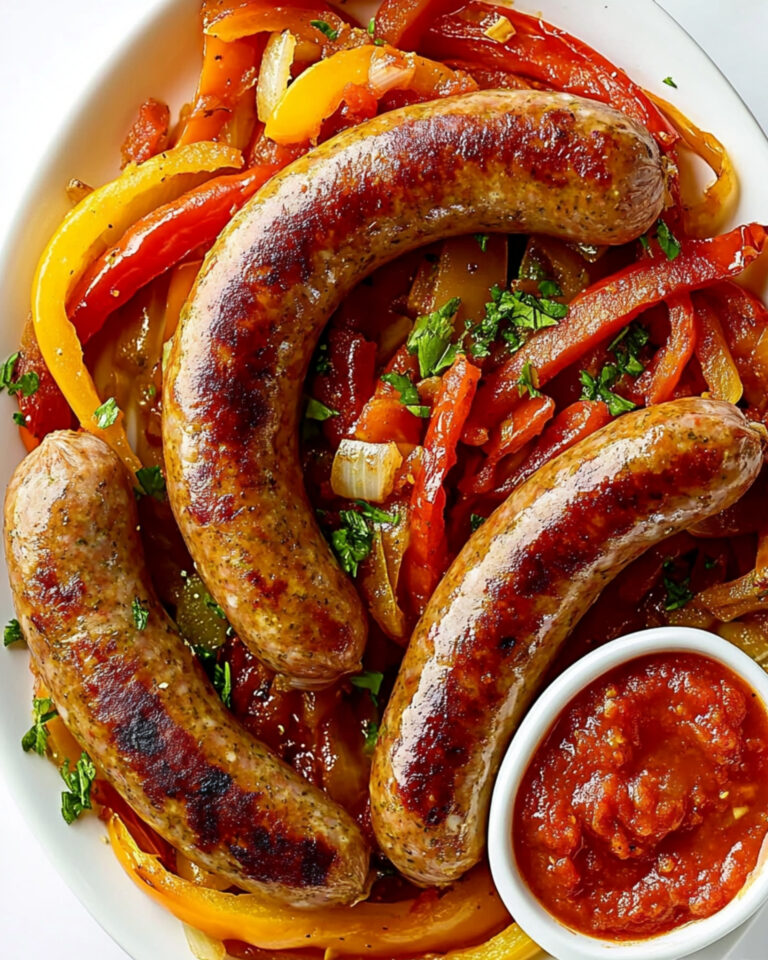If you’ve ever dreamed of mastering the art of delicate, dainty treats that are as stunning as they are delicious, then this French Macarons Recipe is the one you’ve been waiting for. I absolutely love how these little cookies come out with crisp shells, chewy insides, and perfectly ruffled feet – they’re truly a labor of love that pays off big time. Stick with me, and I’ll share everything you need to know to nail this classic treat even if you’ve never tried making macarons before!
Why You’ll Love This Recipe
- Perfect Texture Every Time: This recipe guides you through creating the signature crisp shell with chewy centers and elegant feet that make macarons so irresistible.
- Beginner-Friendly Tips: I break down each step like I’m right there beside you in the kitchen so you can gain confidence and avoid common pitfalls.
- Customizable Flavors: Whether you want classic vanilla or a fun twist like almond or coconut, this recipe welcomes your creativity with optional extracts and colorings.
- Reliable Results: I share tricks I learned from my own trial and error to make sure your macarons come out beautifully every time you try.
Ingredients You’ll Need
The magic of French macarons really comes down to using quality ingredients that work together to create that signature texture and taste. I’ve found that superfine sugar dissolves better for a silky meringue, and beautifully sifted almond flour and powdered sugar give the shells their delicate crumb.
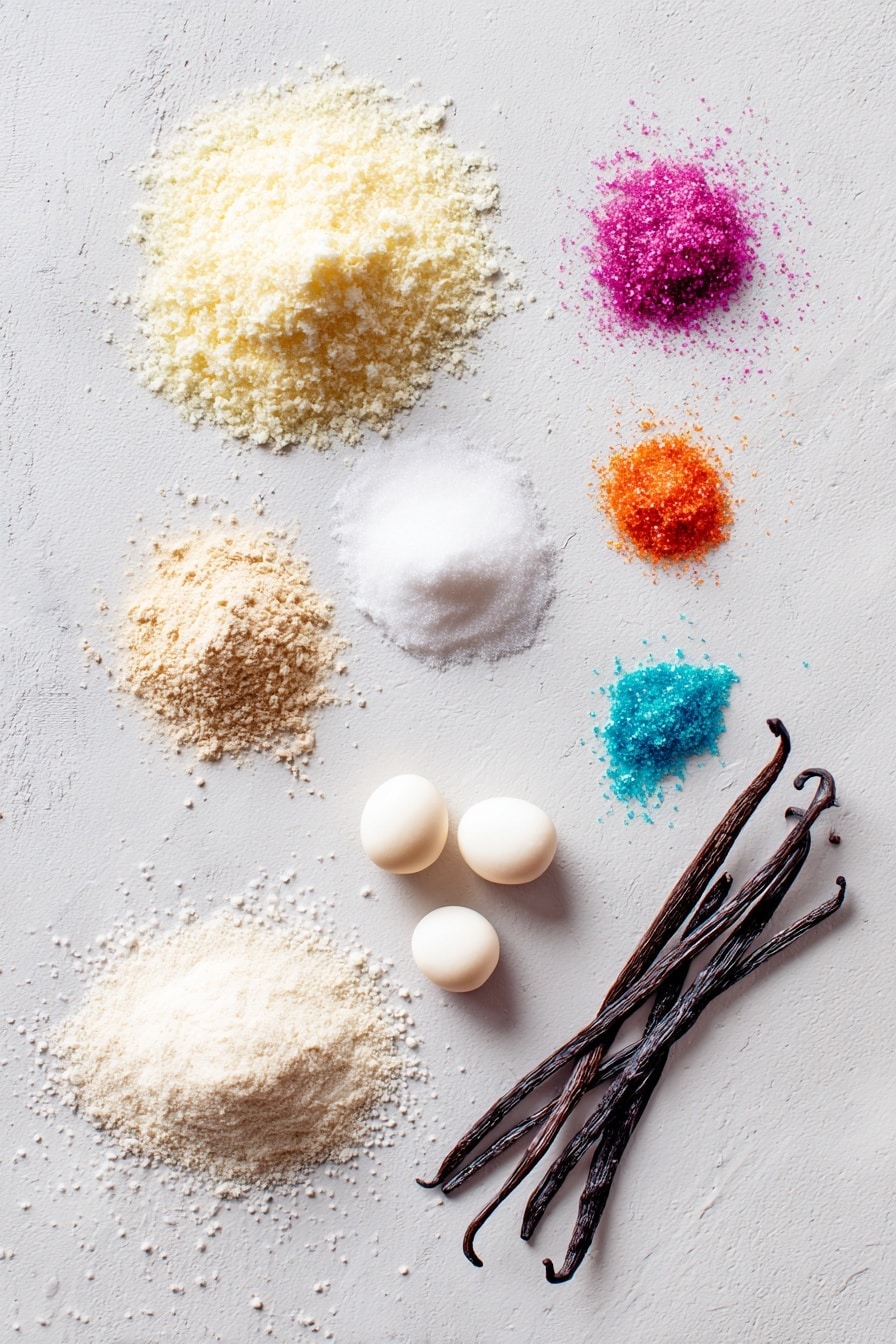
- Egg Whites: Older egg whites (let them sit in the fridge for 24 hours) whip up better and create a sturdier meringue—trust me, it’s a game changer.
- Cream of Tartar: Stabilizes the egg whites so your meringue holds stiff peaks, which is essential for structure.
- Extract (Vanilla, Almond, Coconut): A little goes a long way in flavoring your macarons, and you can customize this to suit your mood or occasion.
- Superfine Sugar (Caster Sugar): This sugar dissolves quickly in egg whites, giving you that glossy finish without graininess.
- Gel Food Coloring (Optional): Highly concentrated so you only need a drop or two to get vibrant, even color without messing up the batter’s consistency.
- Almond Flour: Use finely ground almond flour and sift well to avoid lumps that can ruin your smooth shells.
- Confectioners’ Sugar (Powdered Sugar): Adds sweetness and helps create the perfect texture when combined with almond flour.
- Macaron Filling: From classic buttercream to fresh fruit jams or ganache, the options are endless—I’ll share ideas below!
Variations
One of the things I adore about the French Macarons Recipe is how easily it lends itself to customization. Once you’ve nailed the basic shells, feel free to play around with flavors, colors, and fillings to reflect your personal taste or the season.
- Flavored Shells: Add almond or coconut extract instead of vanilla for a different twist—I’ve had great success with almond extract giving a lovely nutty aroma.
- Colored Macarons: Use gel food coloring to make them pop for holidays or birthday parties. Just be gentle folding in the color so you don’t lose your batter’s consistency.
- Decadent Fillings: I love pairing these with rich chocolate ganache or refreshing lemon curd—try piping in raspberry jam for a fruity surprise.
- Dietary Tweaks: For gluten-free needs, these are naturally gluten-free as long as your flavorings and fillings are safe.
How to Make French Macarons Recipe
Step 1: Prep Your Egg Whites Like a Pro
Start by wiping down a large glass or metal mixing bowl with lemon juice or vinegar—this helps the egg whites whip up fluffier by removing any grease. Add the egg whites, cover, and pop them in the fridge for at least 24 hours. This “aging” process is an old-school trick that really improves your meringue’s stability. When ready, bring the whites to room temperature before you begin whipping.
Step 2: Mastering the Meringue
Add cream of tartar and extract (if you’re using any) to your egg whites. Using a handheld mixer or stand mixer fitted with a whisk attachment, beat on medium speed until you see soft peaks—this means the egg whites will hold their shape but still look slightly wobbly. Then, gradually add your superfine sugar in three parts, whisking between additions. Finally, beat on medium-high speed until you get stiff, glossy peaks that don’t droop when you lift the whisk. It’s exhausting work, but you’ll know you nailed it when you can turn your bowl upside down and the meringue stays put!
Step 3: Sift and Fold Dry Ingredients
I can’t stress enough how important sifting your almond flour and confectioners’ sugar is here. Save any larger bits by pressing them through the sieve with a spoon rather than tossing them out—you don’t want to lose precious almond goodness! Once sifted, slowly fold your meringue into the dry mix in three additions, being gentle but deliberate.
After all the meringue is incorporated, keep folding the batter until it thins down to a smooth, lava-like consistency that drips off your spatula in a “figure 8” within about 10 seconds. This step requires patience—if you under-mix, your macarons won’t spread, and if you over-mix, they’ll be too flat. When in doubt, fold a little more slowly and test again.
Step 4: Pipe, Pop, and Rest
Transfer your batter to a piping bag fitted with a medium round tip. Pipe 1.5–2 inch circles about 1-2 inches apart on silicone mats or parchment paper-lined baking sheets. I like to bang the pan a couple of times on the counter to release any trapped air bubbles and then pop any stubborn ones with a toothpick—this little trick helps make those smooth tops you’re aiming for.
Now, the waiting game: let the piped macarons sit at room temperature for 30–60 minutes until they develop a dry “skin” on top. This crucial step helps the macarons build their iconic “feet” as they bake. Don’t skip it or your shells might crack or spread too thin.
Step 5: Bake to Perfection
Preheat your oven to 325°F (163°C). Bake the shells for 13 minutes, keeping an eye on their “feet” forming along the bottom edges. To check if they’re done, gently touch the shell with a spoon or your finger (careful, it’s hot!). If it feels firm and doesn’t wobble, you’re good to go. If it still jiggles, add a minute or two and test again.
Once out, let them cool on the baking sheet for about 15 minutes before transferring to a rack to cool completely—trust me, trying to peel them too early is the fastest way to break these delicate beauties.
Step 6: Fill and Enjoy
Now for the fun part—filling! Spread or pipe your favorite filling onto a shell and sandwich with another. A classic buttercream, chocolate ganache, or fruity jam all work beautifully. Macarons are actually even better if you refrigerate them for 12 to 24 hours to let the flavors meld and soften the shells slightly, though I confess I usually dive right in because I just can’t wait.
Pro Tips for Making French Macarons Recipe
- Age Your Egg Whites: Leaving your whites in the fridge overnight really stabilizes the meringue, improving your macaron feet and texture.
- Consistency is Key: Master the “figure 8” test to get your batter just right—this tip saved me from many failed batches.
- Don’t Skip the Resting Time: The dry skin on top lets your macarons rise evenly and prevents cracking.
- Temperature Matters: Oven temperatures can vary, so watch your shells for doneness and adjust timing as needed.
How to Serve French Macarons Recipe
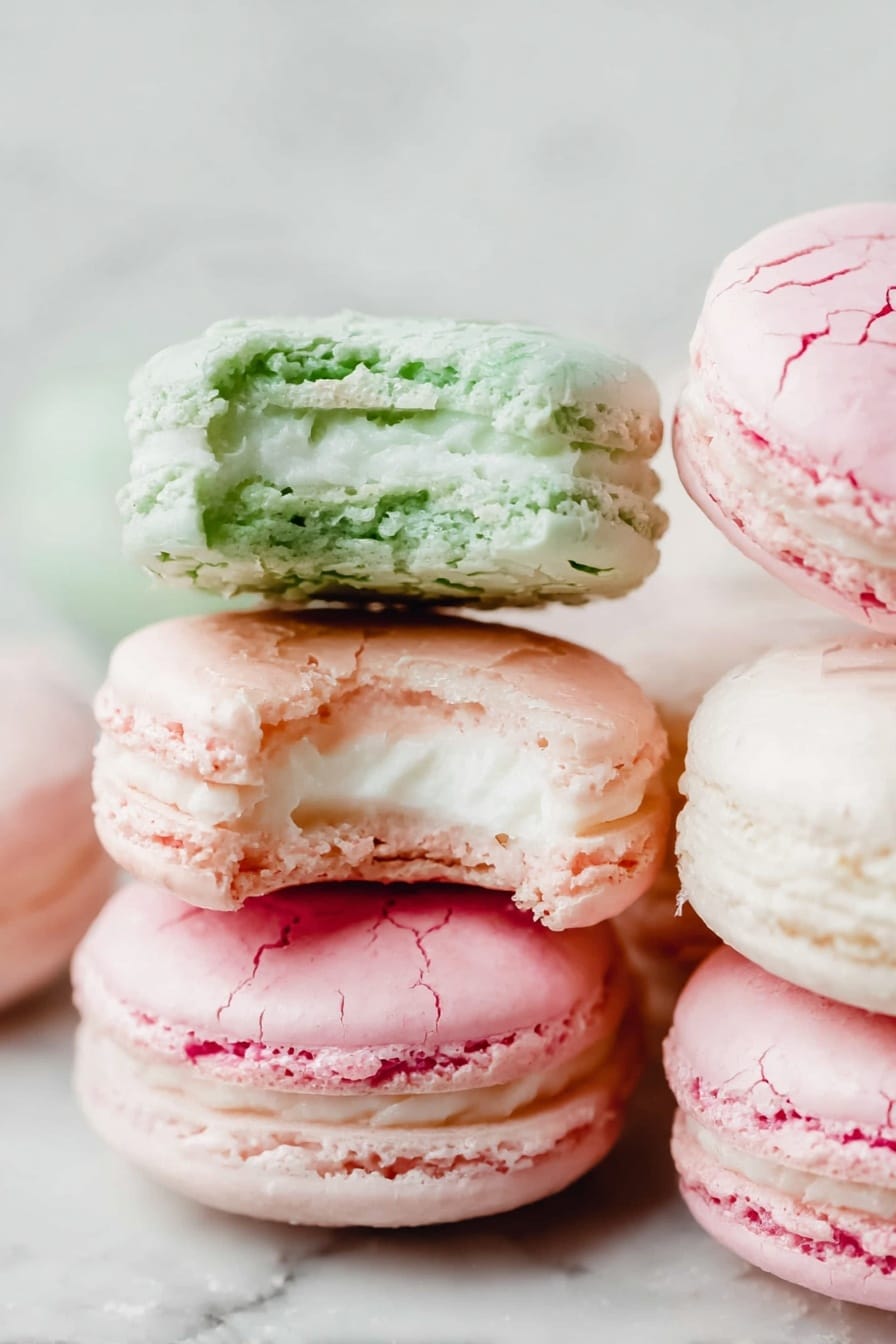
Garnishes
I love adding a tiny sprinkle of edible glitter or a few flakes of crushed freeze-dried raspberry on top of the filling right before sandwiching to give the macarons a little flair and a pop of color. It’s simple but adds a lovely touch for gifting or parties.
Side Dishes
Serve these light treats alongside a fresh fruit salad, a pot of Earl Grey tea, or a creamy cappuccino. I find a cup of good coffee or tea really brings out the depth of the almond flavor and complements the sweet filling perfectly.
Creative Ways to Present
For special occasions like birthdays or bridal showers, I like to display the macarons on tiered stands or in pastel-colored boxes tied with ribbons. You could also arrange them in a rainbow pattern by coloring each batch differently — it turns serving into a real visual treat that guests love.
Make Ahead and Storage
Storing Leftovers
I store leftover macarons in an airtight container refrigerated for up to 5 days. I’ve found this keeps them fresh and prevents the shells from drying out. Just bring them to room temperature before serving so the filling softens beautifully.
Freezing
French macarons freeze great! I place sandwiches in a single layer in a sealed container or freezer bag, separated by parchment paper, and freeze for up to a month. When you want to enjoy them, thaw in the fridge overnight and then let them rest at room temperature for about 30 minutes—deliciously fresh every time.
Reheating
Reheating macarons isn’t really necessary, but if you like your filling a little softer, leaving them at room temperature for 20-30 minutes does the trick. Avoid the microwave, which can make the shells chewy or cracked.
FAQs
-
Can I use regular sugar instead of superfine sugar in macarons?
While regular granulated sugar can sometimes work, superfine sugar dissolves much better into the egg whites creating a smooth, glossy meringue which is critical for macarons. If you don’t have superfine sugar, try pulsing regular sugar in a food processor briefly to make it finer.
-
Why are my macarons cracking?
Cracking usually happens if the macarons haven’t rested long enough before baking and the skin on top hasn’t formed properly. Be patient during the resting phase and make sure your oven temperature isn’t too hot, as that can also cause cracking.
-
How do I know when my macarons are done baking?
The shells should be firm and not wobble when gently touched. They develop the signature feet during baking, which is a good sign. If you’re unsure, adding a minute or two to your bake time is fine, but watch carefully to avoid overbaking.
-
Can I make French macarons without a kitchen scale?
I recommend using a kitchen scale for best results since macarons are very precise, but if you don’t have one, use sifted dry ingredients and egg whites carefully measured by volume. Just know it might take a few tries to get it perfect without weighing ingredients.
Final Thoughts
Making French macarons felt scary to me at first, but with this recipe and the tips I’ve shared, you’ll find it’s totally doable and so rewarding. There’s something incredibly satisfying about piping those little shells and seeing them transform into delicate works of art with crispy feet and soft centers. Plus, they taste amazing and impress everyone. I promise, once you try this French Macarons Recipe, you’ll want to make them again and again. So grab your ingredients, put on your favorite playlist, and let’s get baking together—you got this!
Print
French Macarons Recipe
- Prep Time: 1 hr
- Cook Time: 13 min
- Total Time: 1 hr 30 min
- Yield: About 40 shells, enough for 20 sandwiched macarons
- Category: Dessert
- Method: Baking
- Cuisine: French
- Diet: Vegetarian
Description
This classic French Macaron recipe yields delicate, crisp, and chewy almond meringue cookies with a smooth, glossy shell and a soft center. Perfectly piping and baking these elegant treats allows for a crisp exterior and the iconic ‘feet’ that macarons are known for. Customize with your choice of food coloring and fillings for a beautiful and delicious dessert that’s great for special occasions or everyday indulgence.
Ingredients
Macaron Shells
- 100g egg whites (about 3–4 large egg whites)
- 1/4 teaspoon (1g) cream of tartar
- 1/2 teaspoon vanilla, almond, coconut extract, or other (optional)
- 80g superfine (caster) sugar
- 1–2 drops gel food coloring (optional)
- 125g almond flour
- 125g confectioners’ sugar
Filling (optional)
- Desired macaron filling such as buttercream, ganache, jam, or curd
Instructions
- Prepare the Egg Whites: Wipe a large glass or metal mixing bowl with lemon juice or vinegar to remove grease. Add egg whites, cover, and refrigerate for 24 hours. Bring egg whites to room temperature before using.
- Prepare Baking Sheets: Line three large baking sheets with silicone baking mats or parchment paper. Set aside.
- Beat Egg Whites: Add cream of tartar and extract (if using) to egg whites. Using a handheld or stand mixer with whisk attachment, beat on medium speed until soft peaks form. Gradually add superfine sugar in three parts, beating on medium-high speed until stiff, glossy peaks form. Fold in gel food coloring gently with a rubber spatula if using.
- Sift Dry Ingredients: Sift almond flour and confectioners’ sugar together into a large metal or glass bowl. Use a spoon to work through any large pieces, ensuring ample dry ingredients are retained.
- Combine Mixtures: Fold the beaten egg whites into the almond flour mixture in three additions, folding gently to combine after each. Continue folding slowly until the batter reaches the consistency of honey and passes the figure 8 test, where the batter drips off the spatula forming a figure 8 that disappears within 10 seconds.
- Pipe Macarons: Transfer batter into a piping bag fitted with a medium round tip (Wilton 12, Wilton 1A, or Ateco 806). Pipe 1.5–2 inch rounds spaced 1–2 inches apart onto prepared baking sheets. Tap the trays firmly on the counter to remove air bubbles, then pop any remaining bubbles with a toothpick.
- Rest Piped Batter: Let piped macarons rest at room temperature until a dry, non-tacky skin forms on top, about 30–60 minutes. This helps develop the characteristic feet during baking.
- Preheat Oven: While resting, preheat oven to 325°F (163°C).
- Bake: Bake macarons for 13 minutes. The shells should develop feet and be firm to the touch without wobbling. Add 1–2 minutes if not fully set.
- Cool and Remove: Let macarons cool on the baking sheets for 15 minutes before transferring to a cooling rack to cool completely. If they stick, allow more cooling time on the sheet.
- Fill and Assemble: Once cool, pair shells of similar size and fill with your choice of filling using a knife or piping bag. Sandwich together gently.
- Optional Maturation: Cover and refrigerate assembled macarons for 12–24 hours to allow flavors to meld. Bring to room temperature before serving.
- Storage: Store leftover macarons covered in the refrigerator for up to 5 days.
Notes
- Use precise gram measurements for best results; a kitchen scale is recommended.
- Ensure all bowls and tools are clean and free from grease to achieve stiff egg white peaks.
- Resting time is crucial for forming shells with feet; do not skip.
- Customize macarons with different food colorings and fillings like buttercream, ganache, jam, or lemon curd.
- If shells stick to parchment, allow additional cooling before removal.
- Refer to troubleshooting tips for fixing common mistakes such as cracking, no feet, or flat shells.
Nutrition
- Serving Size: 2 macarons (1 sandwich)
- Calories: 150
- Sugar: 20g
- Sodium: 5mg
- Fat: 7g
- Saturated Fat: 0.5g
- Unsaturated Fat: 6g
- Trans Fat: 0g
- Carbohydrates: 20g
- Fiber: 1g
- Protein: 4g
- Cholesterol: 0mg

